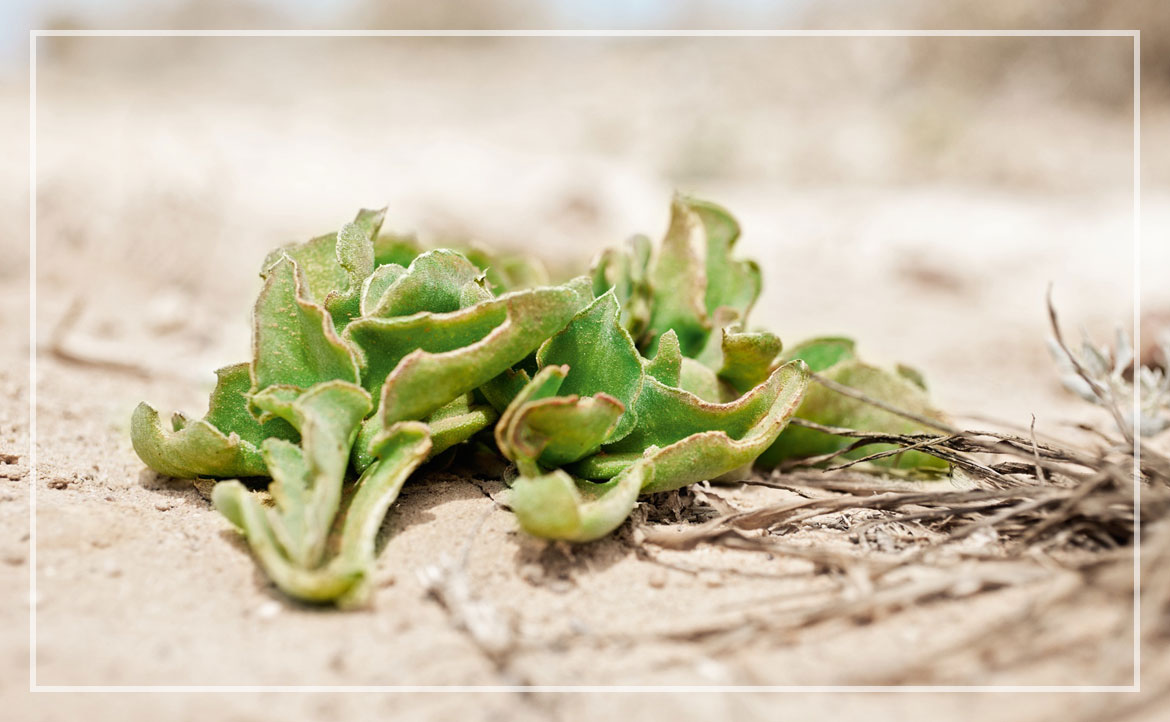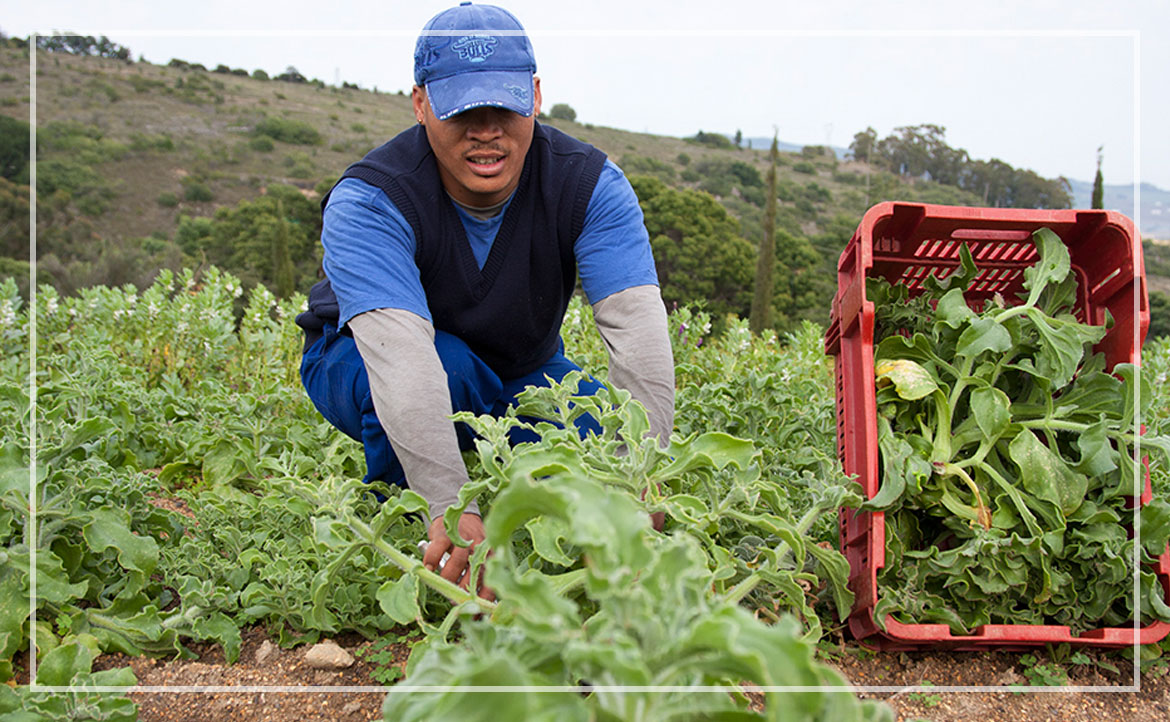Raw material profile
The sun beats down relentlessly on the South African soil, the natural habitat of the ice plant (Mesembryanthemum crystallinum). If you do not want to die of thirst here, you need several tricks up your sleeve. The ice plant is well aware of these and is a specialist when it comes to getting water. It does not have to hide from the beating sun, but instead stretches out as if it were relaxing in the heat. A single plant can often cover more than half a square metre of ground. In doing so, it sparkles as though covered in dew drops or ice crystals: fluid reservoirs on its leaves that hold the secret to its survival. The ice plant’s roots are only a few centimetres long and clearly do not supply it with a great deal of water. Instead, the ice plant collects moisture from the air.
The ice plant thrives in sandy and salty soil near the sea and accumulates salt. Any normal plant dies if exposed to too much salt. In the case of the ice plant, the salt instead stimulates the production of the amino acid proline as well as sugar alcohols. Together with fruit acids and an abundance of magnesium, these result in a natural ability to retain moisture. These ice plant constituents attract and bind the little moisture present in the air. This is demonstrated particularly impressively by plant cuttings, which do not dry out for many weeks. The red colour of the leaves completes the heat protection. The colour comes from ‘betacyanins’, pigments which absorb light and thus provide natural protection against the sun.
But that is not all. Ice plants can hold their breath during the day. Normally plants take in carbon dioxide during the day and convert it to sugar and oxygen with the help of sunlight. The plant breathes through pores on the undersides of the leaves but it also loses large amounts of water through them. The ice plant therefore closes these ‘stomata’ during the day and only breathes after sunset. The carbon dioxide it takes in is bound to a molecule and processed to form sugar and oxygen the following morning by means of photosynthesis.
From July to September the annual to perennial, frost-sensitive ice plant is covered with numerous unobtrusive whitish-green flowers with radially arranged petals. In damp weather the capsules burst open, releasing the grey-brown seeds which need the heat of their native habitat to ripen.





















